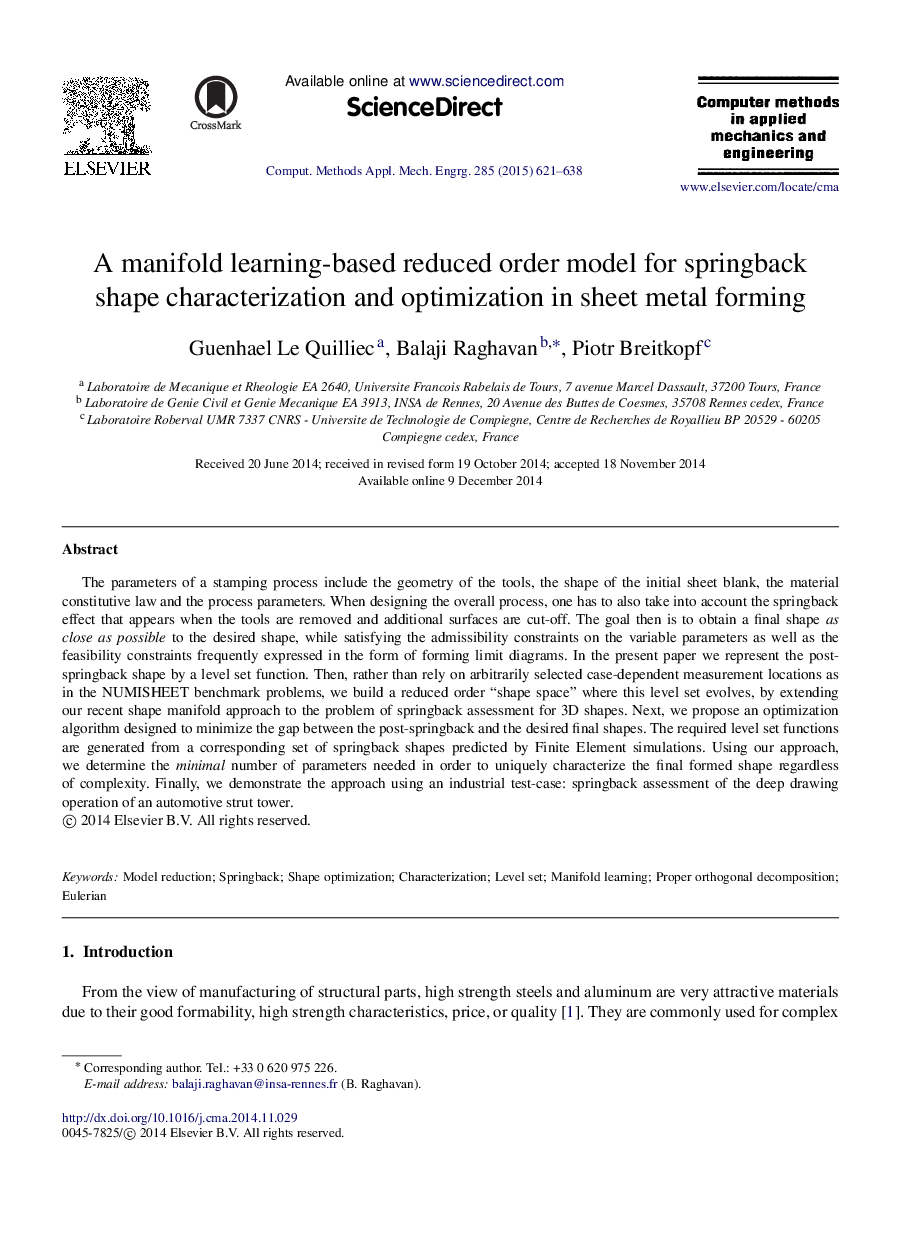| Article ID | Journal | Published Year | Pages | File Type |
|---|---|---|---|---|
| 497849 | Computer Methods in Applied Mechanics and Engineering | 2015 | 18 Pages |
The parameters of a stamping process include the geometry of the tools, the shape of the initial sheet blank, the material constitutive law and the process parameters. When designing the overall process, one has to also take into account the springback effect that appears when the tools are removed and additional surfaces are cut-off. The goal then is to obtain a final shape as close as possible to the desired shape, while satisfying the admissibility constraints on the variable parameters as well as the feasibility constraints frequently expressed in the form of forming limit diagrams. In the present paper we represent the post-springback shape by a level set function. Then, rather than rely on arbitrarily selected case-dependent measurement locations as in the NUMISHEET benchmark problems, we build a reduced order “shape space” where this level set evolves, by extending our recent shape manifold approach to the problem of springback assessment for 3D shapes. Next, we propose an optimization algorithm designed to minimize the gap between the post-springback and the desired final shapes. The required level set functions are generated from a corresponding set of springback shapes predicted by Finite Element simulations. Using our approach, we determine the minimal number of parameters needed in order to uniquely characterize the final formed shape regardless of complexity. Finally, we demonstrate the approach using an industrial test-case: springback assessment of the deep drawing operation of an automotive strut tower.
